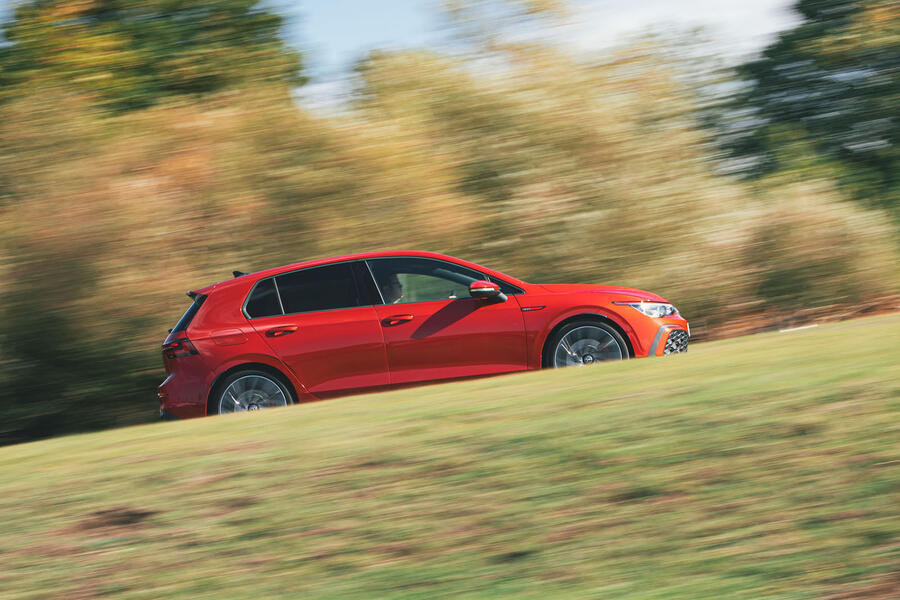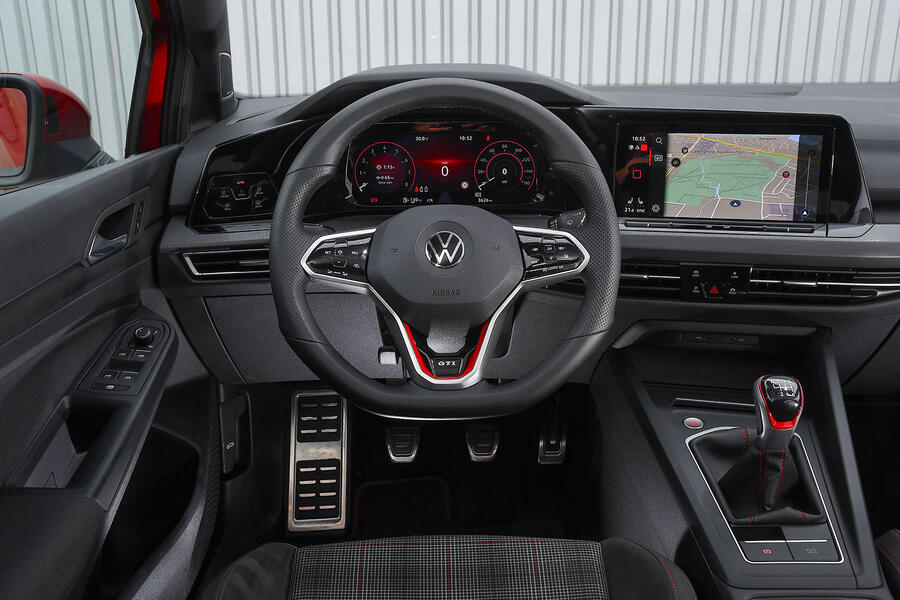The new GTI is tauter, pointier, more direct and more lively to drive than that familiar, finely polished old GTI recipe; but also firmer, fussier and a little bit less couth with it. Then again, if you’ve always thought of this car as a bit of a wet blanket, I suppose, it might now be a more enticing prospect.
The car’s very recognisable from the driver’s seat. It’s now one with an integrated headrest design but is still very comfortable, with good-sized bolsters you can lean on. The de rigueur plaid cloth upholstery is present and correct, and the controls are well located in front of them, the slightly overly bulky gearlever and overly chubby steering wheel rim being only minor bugbears.
The touch-sensitive regime for its secondary controls might not be your cup of tea; the spokes of its steering wheel are certainly busy, and it’s easy to drag a thumb across them by mistake while you’re feeding the wheel. But the digital instruments, I liked; they’re clear and adaptable, and I’m a sucker for the stylised GTI-branding and honeycomb background they have.
The revised EA888 2.0-litre turbo engine still seems a little bit cultured by class standards. It doesn’t pop or bang on the overrun, doesn’t boom or whistle under load either, and is generally well able to fade down to a restrained background hum when you want it to. It’s torquier than you expect it to be, though, with a pretty fierce, thrusty kind or responsiveness from about 2500rpm. It doesn’t offer much beyond 5000rpm; and even if it did, the car’s slightly nondescript manual shift action and pedal weights wouldn’t be particularly tactile invitations to wring out the revs. But the GTI certainly feels pretty potent and ‘on song’ if you keep the needle between those two crank speeds, and it gets up the road more than urgently enough to hold your attention.
The new and slightly insistent firmness of the car’s ride, and damping that at times can feel just a little bit gristly and uncompromising, will keep you concentrating, too; possibly distract you, even, if you hit a testing surface and you’re suddenly looking for an adaptive damping mode that brings that fast-striding ‘GTI’ suppleness out of the car, which somehow now seems conspicuous by its absence.
As surprised as I am to be reporting it, I mustn't exaggerate this; on most UK roads, the new GTI rides well enough - and still better than a lot of its competitors. There is a lateral firmness to its set-up that makes it liable to a bit of head-toss when its axles are upset asymmetrically, though, and a grabbiness to the damping over bigger vertical inputs that can be tricky to iron out even with the car’s new 15-position ‘DCC slider’ adjuster (available in Individual drive mode) driven all the way down. On a patchy motorway, the car has the gentlest high-frequency fidget about it and is just that little bit reluctant to settle. That newly stiffened rear axle – the way it’s mounted as well as tuned – is plainly the main cause; much as it’s also a big factor in delivering the car’s handling gains.
So, are they worth it? Well, I drove the car for most of a day, around towns and on trunk roads just getting from A to B to begin with; and at first it didn’t feel so different. A bit leaner and keener in its low-speed responses, yes, but still typically linear-feeling rather than hyperactive in its handling, and predictably light, slick and easy to operate through the controls. The faster I went and the harder I looked, the more clearly the greater agility and tenacity of that chassis became evident, but it didn’t seem character-changing. Not at first.




Add your comment